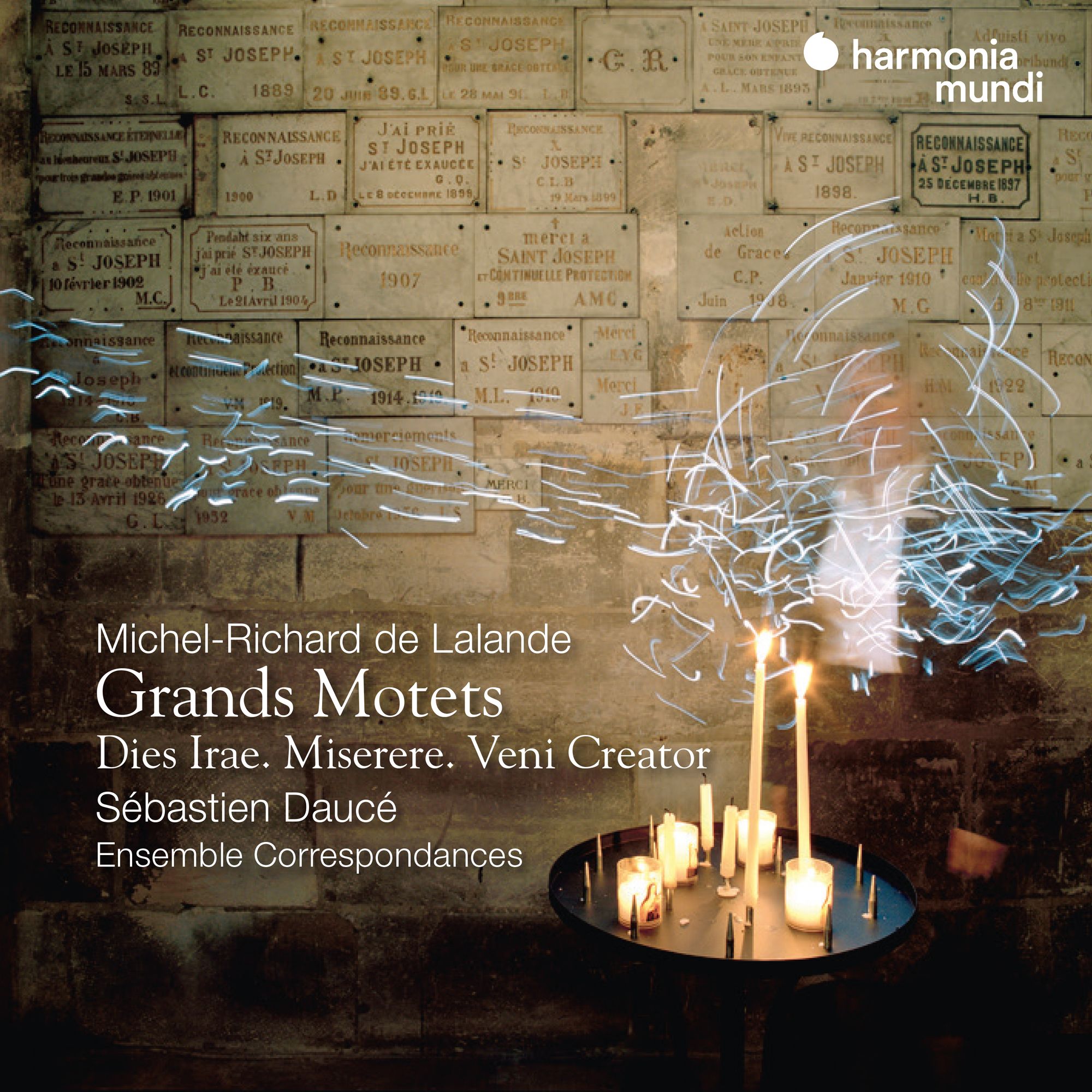Lalande's Grands Motets from Harmonia Mundi
This 80-minute disc surely represents a major stage in our admiration and understanding of Lalande

Sometimes called the "Latin Lully," Michel-Richard de Lalande (1657-1726) was the favoured composer of the French court, epitomising the spirit of the Grand Siècle. He brought the form of the "Grand Motet" to its height, during teh reign of King Louis XIV. For over 40 years he was responsible for providing teh King's music.
We met Lalande before on Classical Explorer in this double-whammy post (aptly, covering both Lully and Lalande). There are four pices on this new disc: the Dies Irae (S 31, 1690), a "Quotuor," an excerpt from the third Caprice of around 1713, itself from Symphonies pour les Soupers du roi, Miserere (S 27, 1687), plus Veni Creator (S 14,1684). The manuscripts for the first two pieces are held at the Bibliothèque Nationale de France, the other two are held at Versailles.
A "grand motet" is a piece for large choir - Lalande left us 71 such. The three on this disc (Dies irae, Miserere and Veni Creator) were composed within a short period of time and date from Lalande's earliest years of composition. The Veni Creator of 1684 uses a Pentecostal hymn, but could also be used at Christmas and New Year's Day. There is a revised version of 1722, possibly prepared for the coronation of Louis XV.
The Dies irae, S 31 was composed for the funeral at Saint-Denis in 1690 of the Dauphine, Marie-Anne-Christine of Bavaria, who died at Versailles on April 20 o fthat year. The music of the Dies irae is remarkably powerful. Listen to the short second section, "Quantus tremor est futurus" (O what fear man's bosom rendeth):
It is as if Lalande threads his harmonies with heart-felt spiritual pain; we are a long way from the fountains of Versailles here! The harmonnies of the "Liber scriptus proferetur" (Lo, the book exactly worded) furnish the perfect example - the soloists here are Lucile Richardot (low treble) and Vojtech Semerád (high tenor):
... the power of those harmonies bleeds into the"Recordare":
Perhaps the most poignant moment comes in the shadowy "Juste judex," (Righteous judge) with low bass Étienne Bazola excelling in his solo:
The performance by Ensemble Correspondances under Sébastien Daucé is faultless, clearly born of the highest scholarship.
The two and a half minute Quotuor acts as an dignified and dolorous interlude before the longest piece on the disc, the 35-minute Miserere. A 1687 setting of Psalm 50, it is, as the booklet notes suggest, "at once mournful and grandiose" - it bbrought to a climax the Offices of Tenebrae of Holy Week. At court, the Miserere was performed as a Grand Motet. The setting is difficult to perform: listen to this movement, the "Amplius lava me" (Wash me thoroughly). The excellent soloist is tenor Antonin Rondepierre:
One of the most purely beautiful movement sis the "Asperges me hysopo" (Purge me with hyssop) - the soloist here is Caroline Weynants:
Lalande does include significant contrast, though - the choral, active, almost dancing "Docebo iniquos vias tuas" (Then will I teach the transgressors thy ways) being a case in point:
As with the other two pieces on this disc, the Veni Creator, S 14 (1684) alternates solo récits, large choruses and symphonies in a single line. The use of multiple soloists in this work, alternating at times with chorus is remarkably effective. Here's the "Qui Paraclitus diceris" (Great Paraclitus, to thee we cry):
This disc surely represents a major stage in our admiration and understanding of Lalande. Superbly performed and with a state-of-the-art recording. Last year, Classical Explorer covered a string of discs that won Gramophone Awards: this partcular disc deserves a shower of such awards. Oh yes, and it also lasts over 80 minutes!
